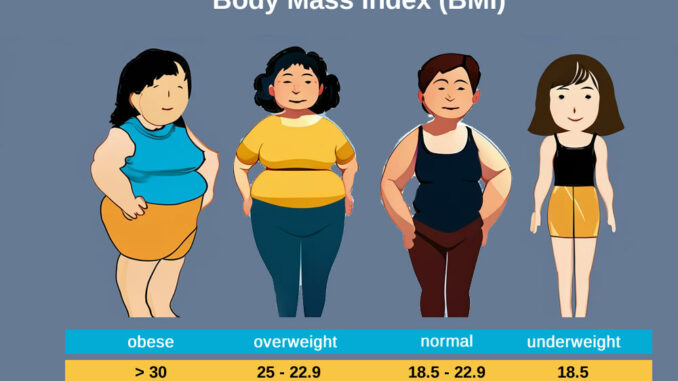
Calculating your Body Mass Index (BMI) is a widely-used method to assess whether your weight falls within a healthy range relative to your height. It’s a simple yet valuable tool that can provide insight into your overall health status and help guide your weight management goals. In this comprehensive guide, we will delve into the intricacies of BMI, how to calculate it accurately, what the results mean, and its limitations.
Understanding Body Mass Index (BMI):
BMI is a measure of body fat based on your weight and height. It’s calculated by dividing your weight in kilograms by your height in meters squared. The formula is:
BMI = weight (kg) / (height (m))^2
The resulting number provides a numerical value that falls into one of several categories, ranging from underweight to obese, each with associated health risks.
Steps to Calculate BMI:
- Measure Your Weight: Use a reliable scale to measure your weight in kilograms. Ensure you’re wearing minimal clothing for accuracy.
- Measure Your Height: Use a tape measure or stadiometer to measure your height in meters. Stand barefoot with your back against a wall, heels together, and head straight.
- Calculate Your BMI: Once you have your weight and height measurements, plug them into the BMI formula: BMI = weight (kg) / (height (m))^2.
- Interpret Your BMI: After calculating your BMI, refer to a BMI chart or calculator to determine your BMI category. These categories typically include underweight (BMI < 18.5), normal weight (BMI 18.5 – 24.9), overweight (BMI 25 – 29.9), and obese (BMI ≥ 30).
What Your BMI Means:
- Underweight: A BMI below 18.5 suggests that you may be underweight, which could indicate malnutrition or other health concerns.
- Normal Weight: Falling within the BMI range of 18.5 to 24.9 is generally considered healthy, with a lower risk of weight-related health issues.
- Overweight: A BMI between 25 and 29.9 indicates that you may be overweight, which can increase your risk of developing chronic conditions such as heart disease and type 2 diabetes.
- Obese: A BMI of 30 or higher suggests obesity, which significantly raises your risk of obesity-related health problems, including high blood pressure, stroke, and certain cancers.
Limitations of BMI:
While BMI is a valuable screening tool, it has limitations and may not provide a complete picture of an individual’s health. Factors such as muscle mass, bone density, and distribution of fat can influence BMI results. For example, athletes and individuals with a high muscle mass may have a higher BMI despite being healthy and fit.
Conclusion:
Calculating your Body Mass Index (BMI) is a straightforward method to assess your weight relative to your height and gauge your risk of weight-related health issues. By following the steps outlined in this guide, you can determine your BMI category and use this information to make informed decisions about your health and well-being. Remember that while BMI is a useful tool, it’s essential to consider other factors, such as body composition and overall lifestyle, when evaluating your health status. If you have concerns about your BMI or weight, consult with a healthcare professional for personalized guidance and support.